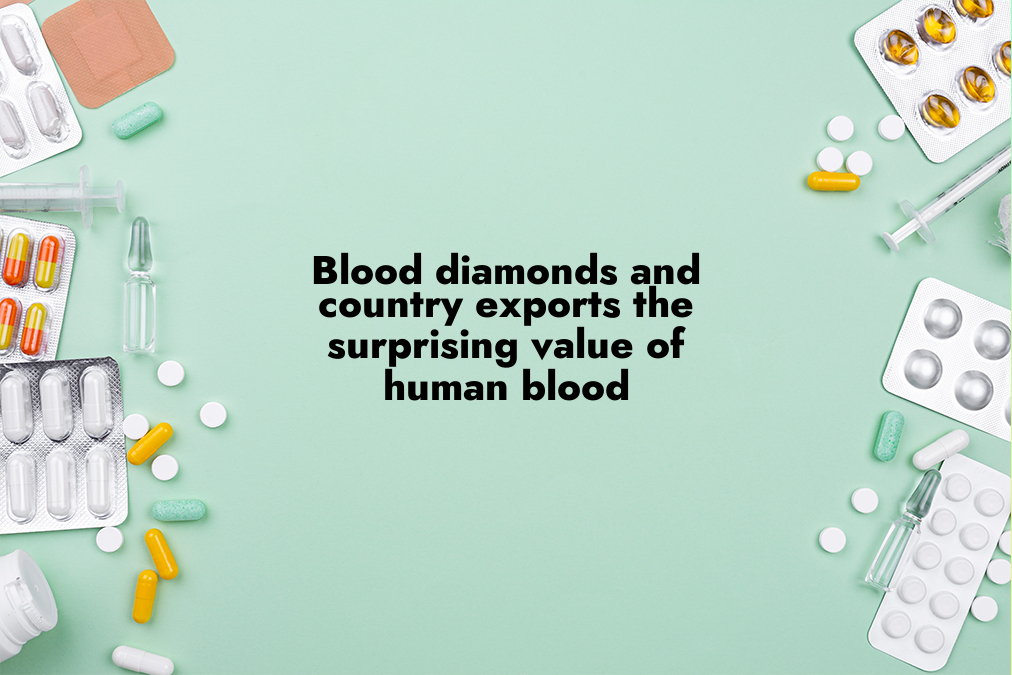In an era of global trade and economic interdependence, there exist commodities that bear a sinister reputation, haunting the conscience of consumers and policymakers alike. Blood diamonds, also known as conflict diamonds, are one such dark chapter in the world of international commerce. This article delves into the intricate web of blood diamonds and the often-overlooked connection between these illicit gems and a country’s exports. Prepare to journey through the complexities of this issue as we explore its history, impact, and potential solutions.
Unveiling the Dark Origins
The Genesis of Blood Diamonds
To understand the shocking value of human blood entwined with these precious stones, we must first examine their origins. Blood diamonds originate from regions plagued by civil unrest and armed conflicts, primarily in Africa. These diamonds are mined under brutal conditions, often by exploited laborers subjected to violence and coercion. The allure of blood diamonds lies in their ability to fund rebel groups, further destabilizing already fragile nations.
The Toll on Human Lives
The human cost associated with blood diamonds is staggering. Miners, many of whom are children, endure grueling labor in hazardous environments, all while receiving meager wages. The proceeds from these diamonds often fund armed conflicts that lead to the displacement and suffering of countless innocent civilians. The shocking reality is that every blood diamond has a human story, marked by pain and suffering.
The Surprising Connection
Exporting Conflict, Importing Wealth
While the term “blood diamonds” invokes images of clandestine mining operations in war-torn regions, the global diamond trade has a curious relationship with these gems. Many countries that are major players in the diamond industry have a significant stake in exporting these conflict diamonds, albeit indirectly. This intricate web of international trade raises questions about the true cost of luxury.
The Beneficiary Nations
Countries like Belgium, Israel, and India, which are renowned for their diamond cutting and trading industries, indirectly benefit from the export of blood diamonds. These nations play a pivotal role in processing and selling these gems, thereby contributing to the perpetuation of conflicts in diamond-rich regions. The profits generated from blood diamonds find their way into the global market, enriching even those nations far removed from the source of the conflict.
Confronting the Moral Dilemma
The Responsibility of Consumers
As consumers, we hold the power to change the trajectory of the blood diamond trade. By demanding transparency and ethical sourcing, we can push the diamond industry to abandon its connection to conflict diamonds. It is imperative to question the origins of the diamonds we purchase and choose brands committed to responsible practices. Every purchase is a choice that can either perpetuate suffering or contribute to positive change.
International Efforts and Solutions
On a broader scale, international initiatives and agreements aim to curtail the trade in blood diamonds. The Kimberley Process Certification Scheme, established in 2003, seeks to prevent the sale of conflict diamonds in the global market. However, its effectiveness has been a subject of debate, as loopholes and lack of enforcement persist. It is crucial for nations and organizations to strengthen these mechanisms to eradicate blood diamonds completely.
Conclusion: A Call to Action
Shaping a Bloodless Future
In conclusion, the surprising value of human blood in the context of blood diamonds sheds light on the interconnectedness of global trade and conflict. As consumers and global citizens, we must grapple with the ethical implications of our choices. The diamond industry’s complicity in perpetuating conflict demands our attention and action. By supporting ethical practices and advocating for stronger regulations, we can hope for a future where diamonds no longer bear the stain of human suffering. Let us collectively work towards a world where the true value of these gems lies in their beauty, not in the bloodshed that accompanies them.
In the face of this perplexing issue, it is our moral duty to seek solutions, promote awareness, and strive for a world where the sparkle of a diamond no longer conceals the darkness of its origin. Together, we can create a future where the value of human blood is cherished, not exploited.
“The true measure of any society can be found in how it treats its most vulnerable members.” – Mahatma Gandhi

